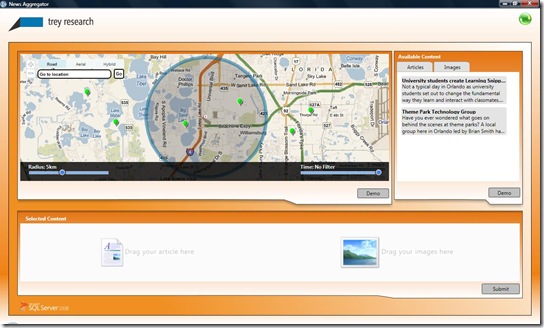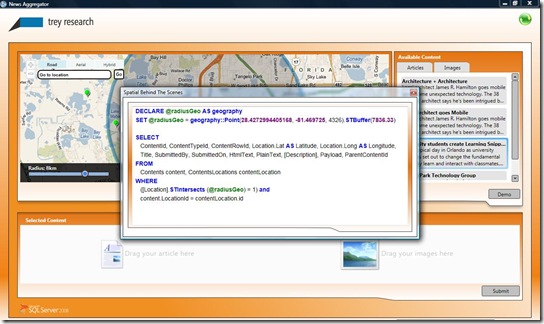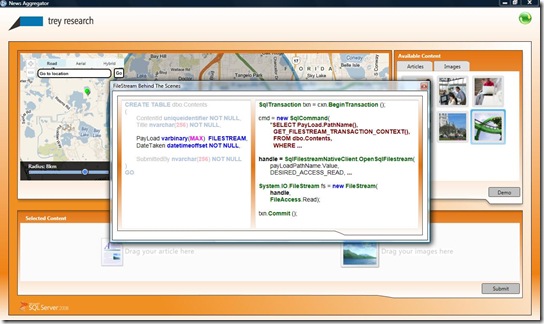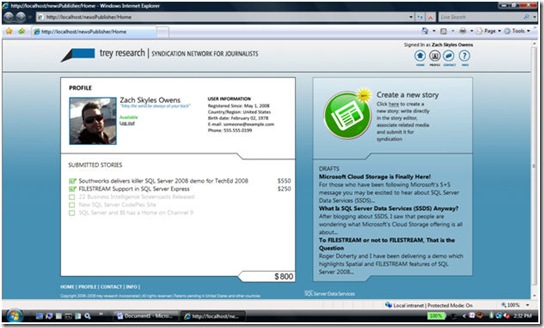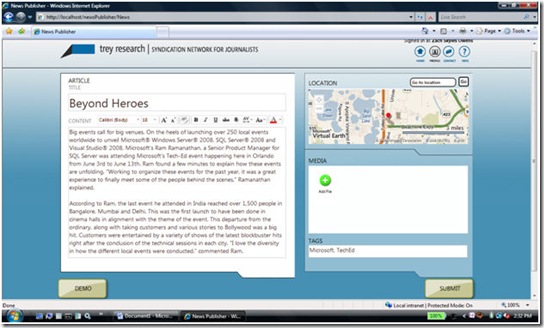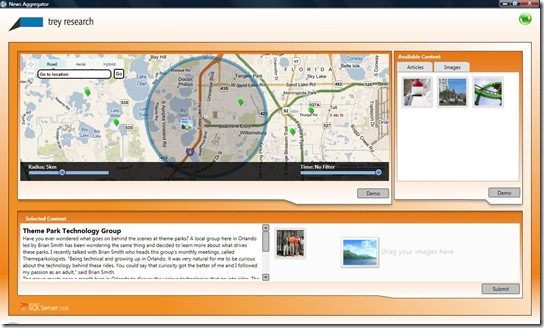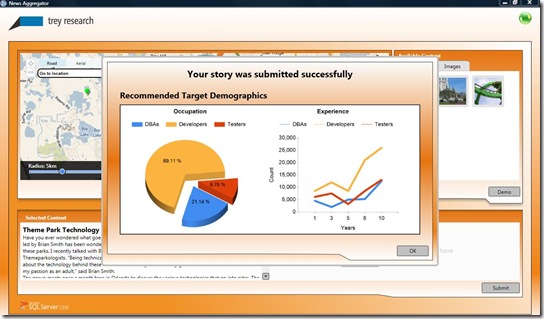‘Beyond Heroes’ – Behind the scenes with SQL Server 2008 at TechEd 2008
Developers were treated to a first hand look at what is possible using Microsoft’s Data Platform technologies. SQL Server 2008, the Microsoft Sync Framework and the new SQL Server Data Services cloud storage were featured in Bill Gate’s keynote on Tuesday. Technical Fellow, Dave Campbell, took the audience for a tour around a 3-part data platform demo that enabled a fictitious news agency called “Trey Research” to launch a new business model that turns bloggers into freelance journalists.
The premise for the demo was that Trey Research lets bloggers submit articles and photos to a website that uses SQL Server Data Services (SSDS) to store the content in the cloud. The need to get the website up and running quickly with minimal provisioning, while supporting unpredictable spikes in user load, made SSDS a good solution for storing the content in the cloud.
Attendees saw how analysts at Trey Research used a WPF application to process blogger content locally to create news stories. The WPF application connected to a local SQL Server 2008 database that was being synced in real-time with content stored in SSDS. The app lets Trey Research Analysts use SQL Server’s Spatial support to quickly and interactively find content (articles and photos) by zooming in on an area and finding matching content.
The WPF app used SQL Server’s new FILESTREAM support to store the documents and images efficiently in the file system, while providing full transactional and manageability support with the SQL Server database. FILESTREAM eliminated the need for Trey Research to decide whether to store this unstructured data in the database or link it via path information by providing the best of both worlds.
Dave showed how blogger’s submitted content on the website by using the Trey Research web app to create a new article called “Beyond Heroes” and interactively geo-tagging the article to the Orange County Convention Center in Orlando. After submitting his article, Dave used IE to show what this data looked like in SSDS and using LINQ directly from the IE address bar, he queried SSDS to find the story he just submitted.
Dave went on to show that bloggers could also submit photos via a Trey Research sync-enabled mobile application that was developed with the Microsoft Sync Framework. The Trey Research mobile app synchronized photos with SSDS in the cloud, as was demonstrated when Moe Khosravy from the Microsoft Sync Framework team (acting as a blogger with a Trey Research online account) took a photo of Dave Campbell on stage and synched it real-time with SSDS.
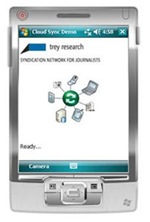 |
 Real-time photo of Dave Campbell synced during demo. |
Attendees watched as Dave then used the WPF app to find and process his article and the photo taken by Moe, into a new news story for TechEd. The content stored in SSDS was being synchronized with the local SQL Server 2008 database to provide analysts high-speed, rich interaction with the content and enabling them to perform additional analytics on this data.
After creating the story using his article and Moe’s picture, the WPF app displayed a pie chart and graph that showed a break down of Developers, IT Pros and Testers. Dave explained that he was still working on the final piece of his Trey Research app, which used SQL Server Analysis Services and Reporting Services to determine the ideal target audience for the created stories.
Please note, to show clarity the screenshots above, other than photo of Dave Campbell, were taken from our internal demo script.
Other Links:
Read about the Trey Research Demo Architecture by Zach Owens
TechEd 2008: Developer Highlights (Joe Wilcox – Microsoft Watch)

